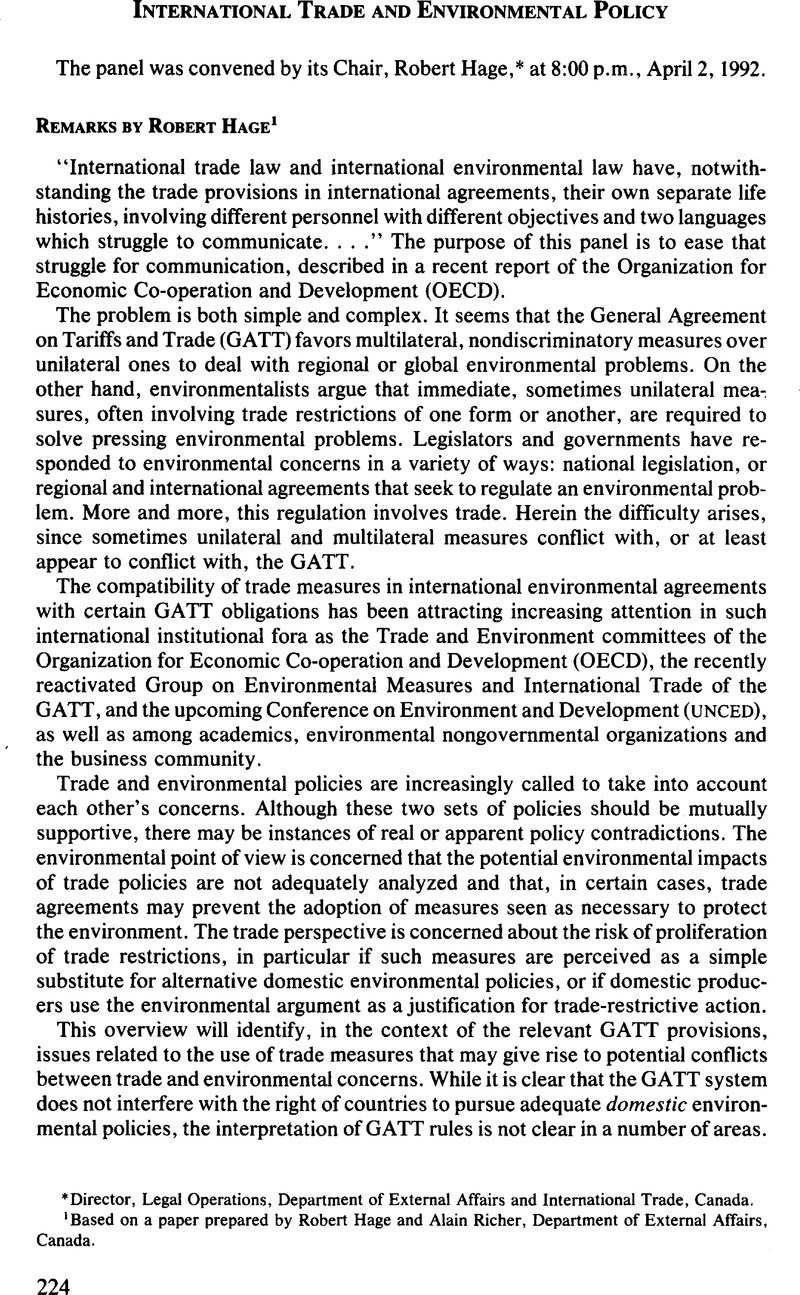No CrossRef data available.
Published online by Cambridge University Press: 28 February 2017

1 Based on a paper prepared by Robert Hage and Alain Richer, Department of External Affairs, Canada.
2 The distinction between global (including regional) and domestic is not always clear-cut. For example, improvements in scientific analysis and measurement techniques have revealed that what used to be perceived as domestic problems can later be recognized as regional or even global in their ultimate impact. However, this distinction is useful for the purposes of this overview.
3 Although, as the first Canada-U.S. Free Trade Agreement panels found out, the Canadian imposition of a landing requirement for salmon for conservation reasons and the U.S. imposition of minimumsize requirements for lobster, for the same reasons, were anything but uncontroversial. See Canada’s Landing Requirement for Pacific Coast Salmon and Herring, CDA 89-1807-01; see also Lobster from Canada, USA 89-1807-01 (Free Trade Agreement Panel final report) 1990).
4 See United States—Restriction on Imports of Tuna, Report of the GATT Panel, August 16, 1991, reprinted in 30 ILM 1594 (1991).
5 INTERNATIONAL TRADE 1990-91 (Chapter on Trade and Environment), February 12, 1992.
6 Although the panel was dealing with a specific unilateral trade measure, its suggestion clearly applies to other trade measures.